Seaweeds of the South African South Coast


Order Dictyotales
Family Dictyotaceae
Dictyota dichotoma (Hudson) J.V.Lamouroux 1809: 42
Plants mid-brown to yellow-brown, morphologically rather variable (we include the former D. dichotoma var intricata (C. Agardh) Greville in this entity.- see note); from a few to 6 cm tall, fairly regularly dichotomously branched in one plane with up to 10 orders of branches, axes between 1 and 5 mm wide; branch apices rounded; branches often contorted in narrower specimens; some plants with repent basal axes. Axes 100 – 140 µm thick, comprising single layer of large medullary cells inside a single-layered cortex. In cross section medullary cells 75-80 µm high, cortical cells 10-13 µm high.
Collections, ecology and regional distribution
Reported in Langebaan Lagoon then from the west side of the Cape Peninsula to KwaZulu-Natal (Stegenga et al. 1997), but eastern limits uncertain (13, 16-48?). Found in the shallow sublittoral zone and in rock pools in the lower eulittoral.
World distribution: Reported to be widespread on temperate and tropical coasts (MD Guiry in Guiry & Guiry 2016), but molecular studies are required worldwide. Although De Clerck (2003) considered that this species may be restricted to the north-east Atlantic Ocean and Mediterranean Sea, recent molecular evidence confirms its occurrence in South Africa (O. De Clerck, pers, comm).
Type locality: Walney Island, Lancashire, England (Silva et al. 1996).
Note: Tronholm et al (2010) reported that European D. dichotoma var intricata could not be genetically distinguished from D. dichotoma. Furthermore, our specimens show a range of forms that encompass both entities as morphologically delimited. We therefore treat all of them as D. dichotoma.
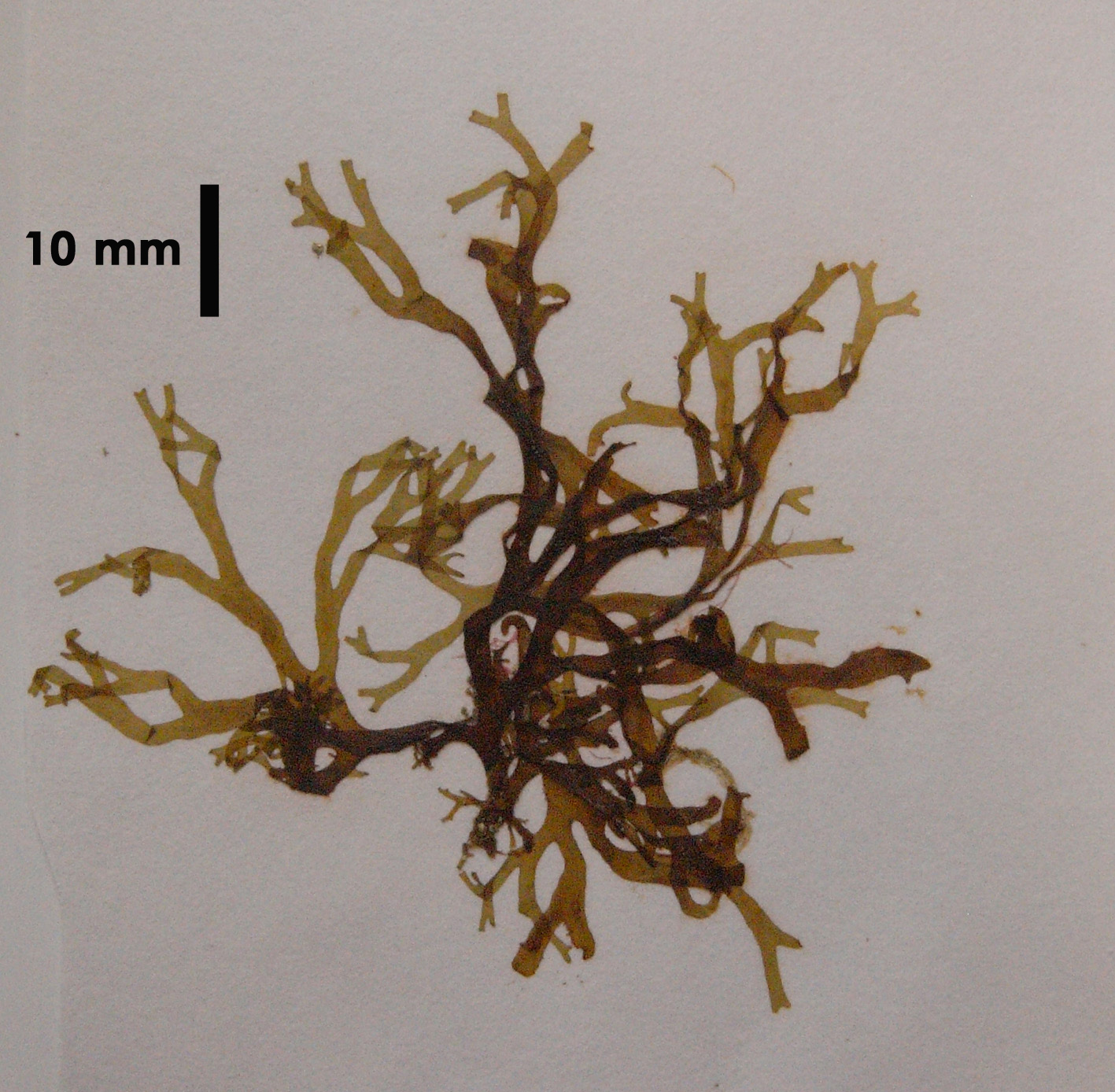
Dictyota dichotoma, pressed specimen, Gansbaai (D 204, identity confirmed molecularly: O De Clerck, pers comm.).
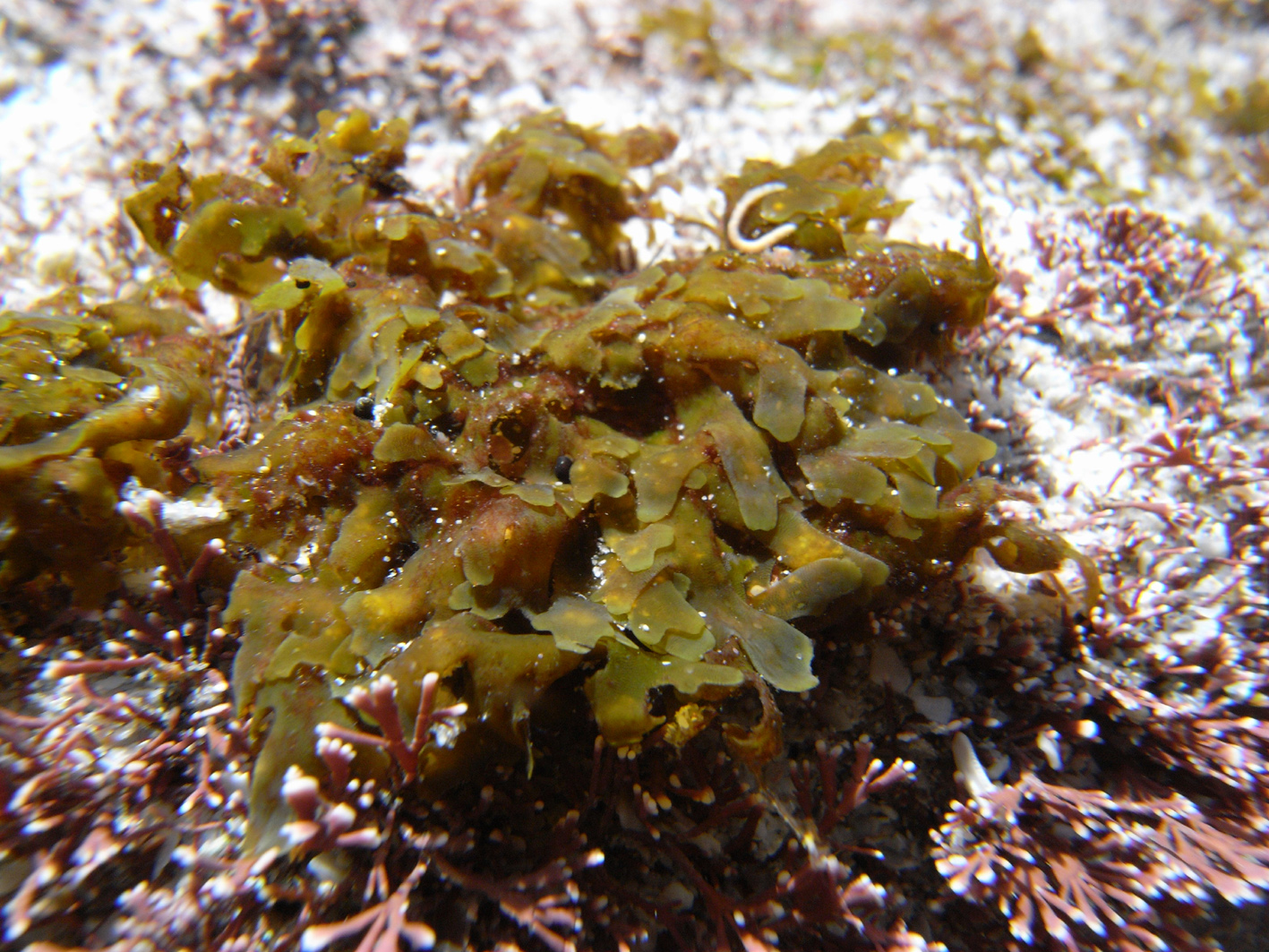
Dictyota dichotoma, repent form, Noetsie, De Hoop. Axes up to 2.5 mm wide (specimen D 950 Noetsie, De Hoop, identity confirmed molecularly: O De Clerck, pers comm.).
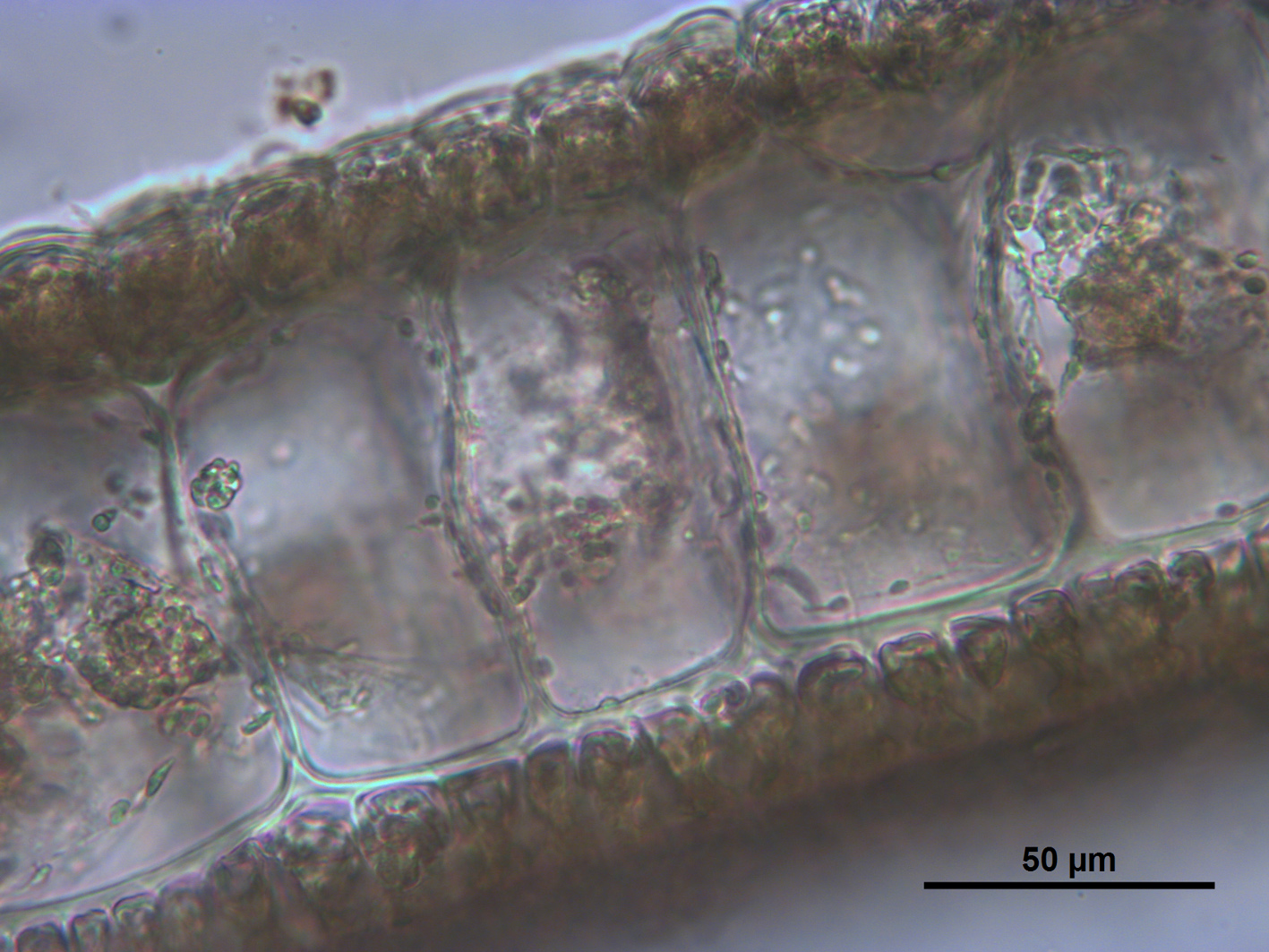
Dictyota dichotoma, cross section (specimen D 950 Noetsie, De Hoop) showing large medullary and small cortical cells.
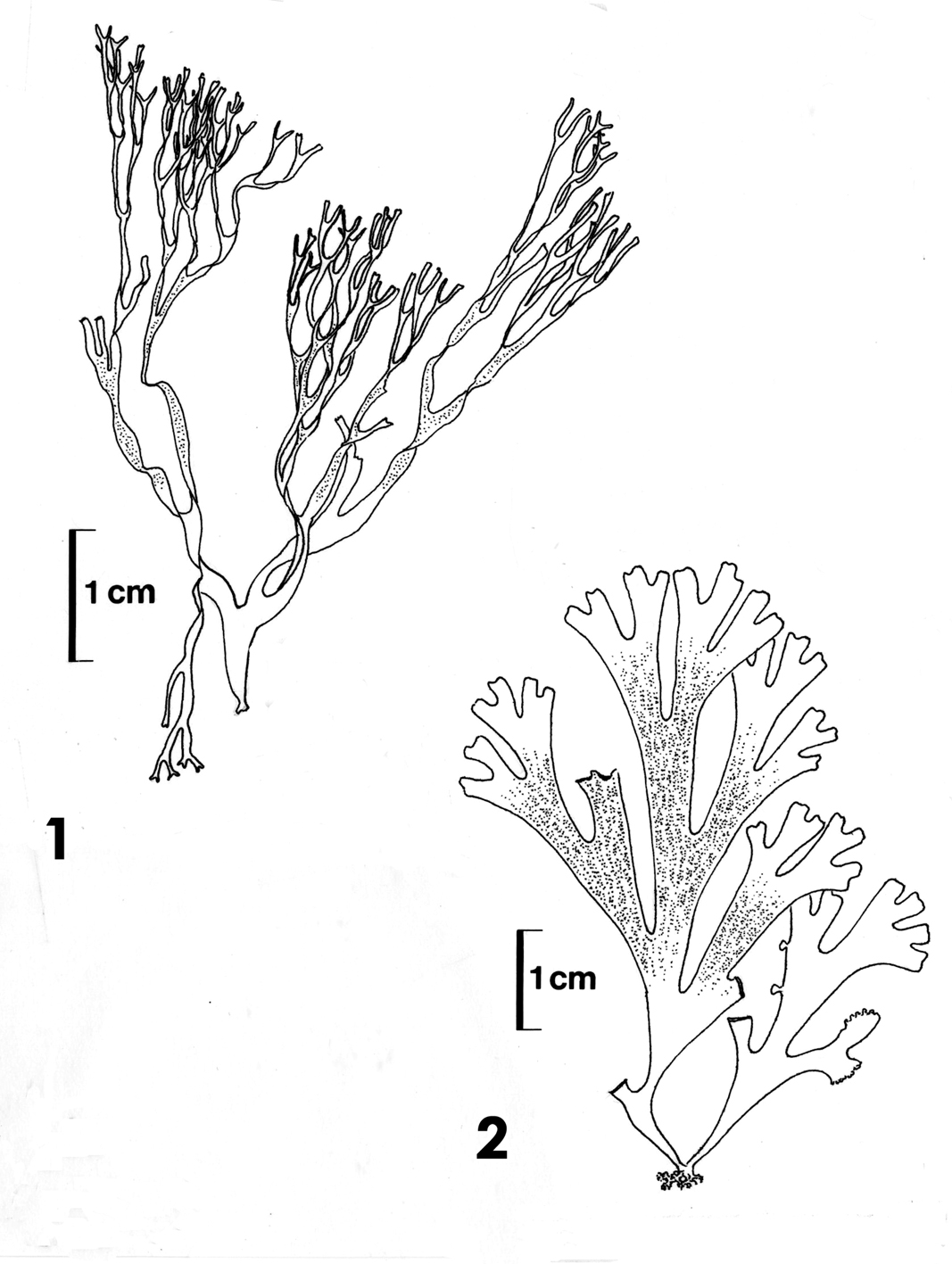
Dictyota dichotoma. 1. Habit of narrow form (previously called D. dichotoma var intricata). 2. Habit of wider form, sporangiferous thallus. Reproduced from Stegenga et al. (1997).
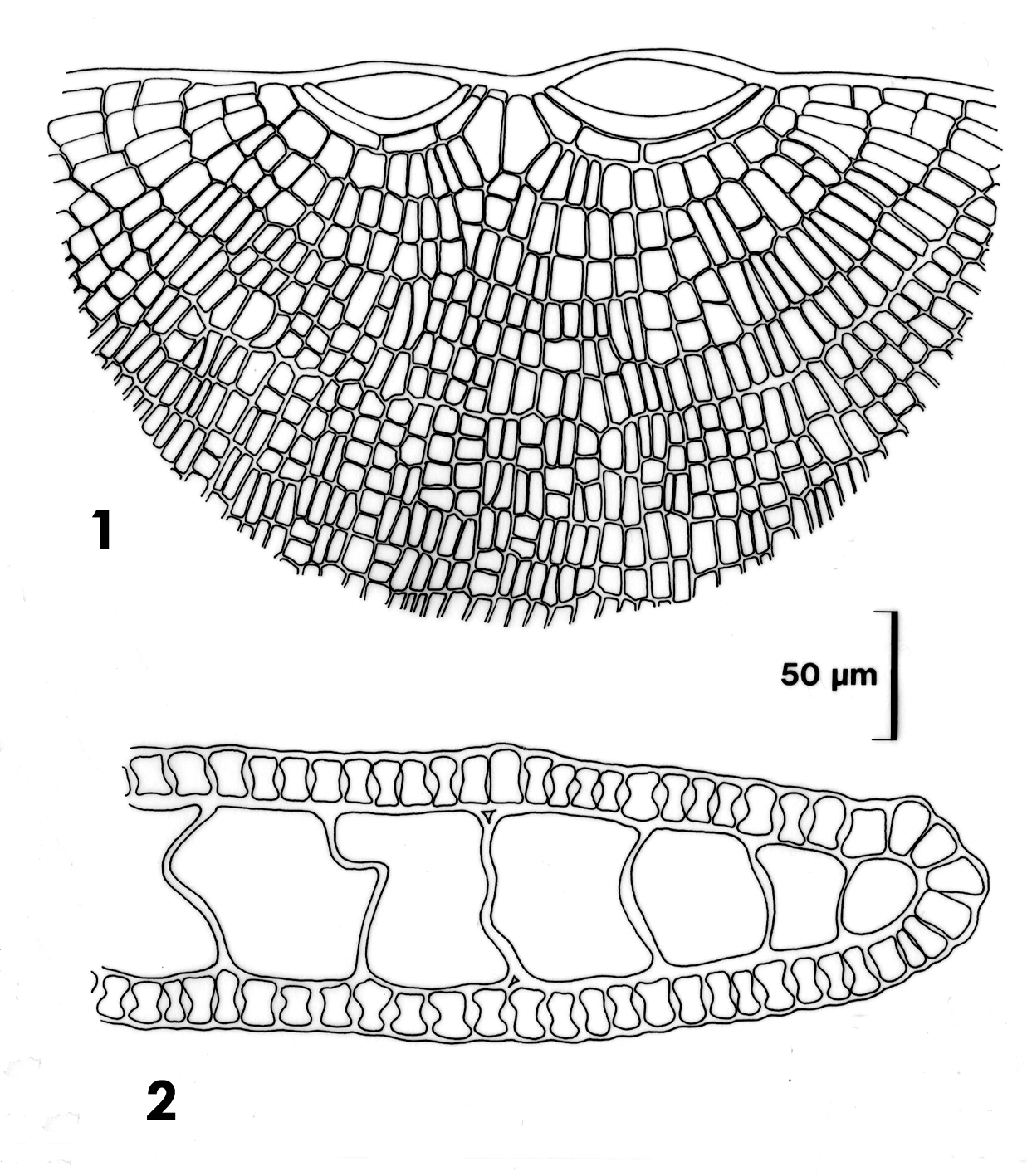
Dictyota dichotoma. 1. Thallus apex. 2. Cross section. Reproduced from Stegenga et al. (1997).
References Dictyota dichotoma
M.D. Guiry in Guiry, M.D. & Guiry, G.M. 2016. AlgaeBase. World-wide electronic publication, National University of Ireland, Galway. http://www.algaebase.org; searched on 11 July 2016.
Lamouroux, J.V.F. (1809). Exposition des caractères du genre Dictyota, et tableau des espèces qu'il renferem. Journal de Botanique (Desvaux) 2: 38-44.
Silva, P.C., Basson, P.W. & Moe, R.L. (1996). Catalogue of the benthic marine algae of the Indian Ocean. University of California Publications in Botany 79: 1-1259
Stegenga, H., Bolton, J.J. and R. J. Anderson. 1997. Seaweeds of the South African west coast. Contributions from the Bolus Herbarium 18: 655 pp.
Tronholm, A., Steen, F., Tyberghein, L., Leliaert, F. Verbruggen, H., Siguan, M.A.R. & De Clerck, O. (2010). Species delimitation, taxonomy, and biogeography of Dictyota in Europe (Dictyotales, Phaeophyceae). Journal of Phycology 46(6): 1301-1321.
Cite this record as:
Anderson RJ, Stegenga H, Bolton JJ. 2016. Seaweeds of the South African South Coast.
World Wide Web electronic publication, University of Cape Town, http://southafrseaweeds.uct.ac.za; Accessed on 23 December 2025.